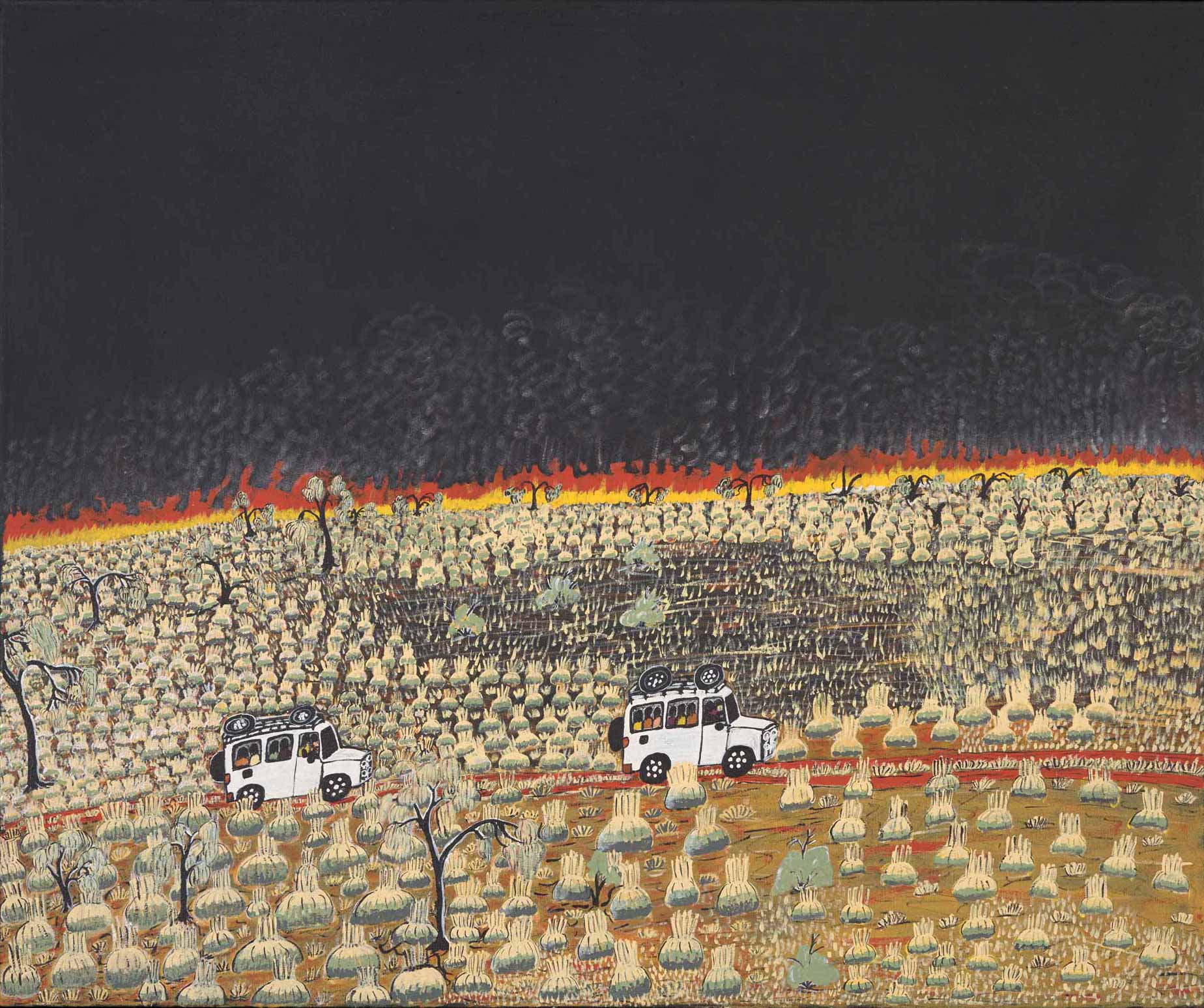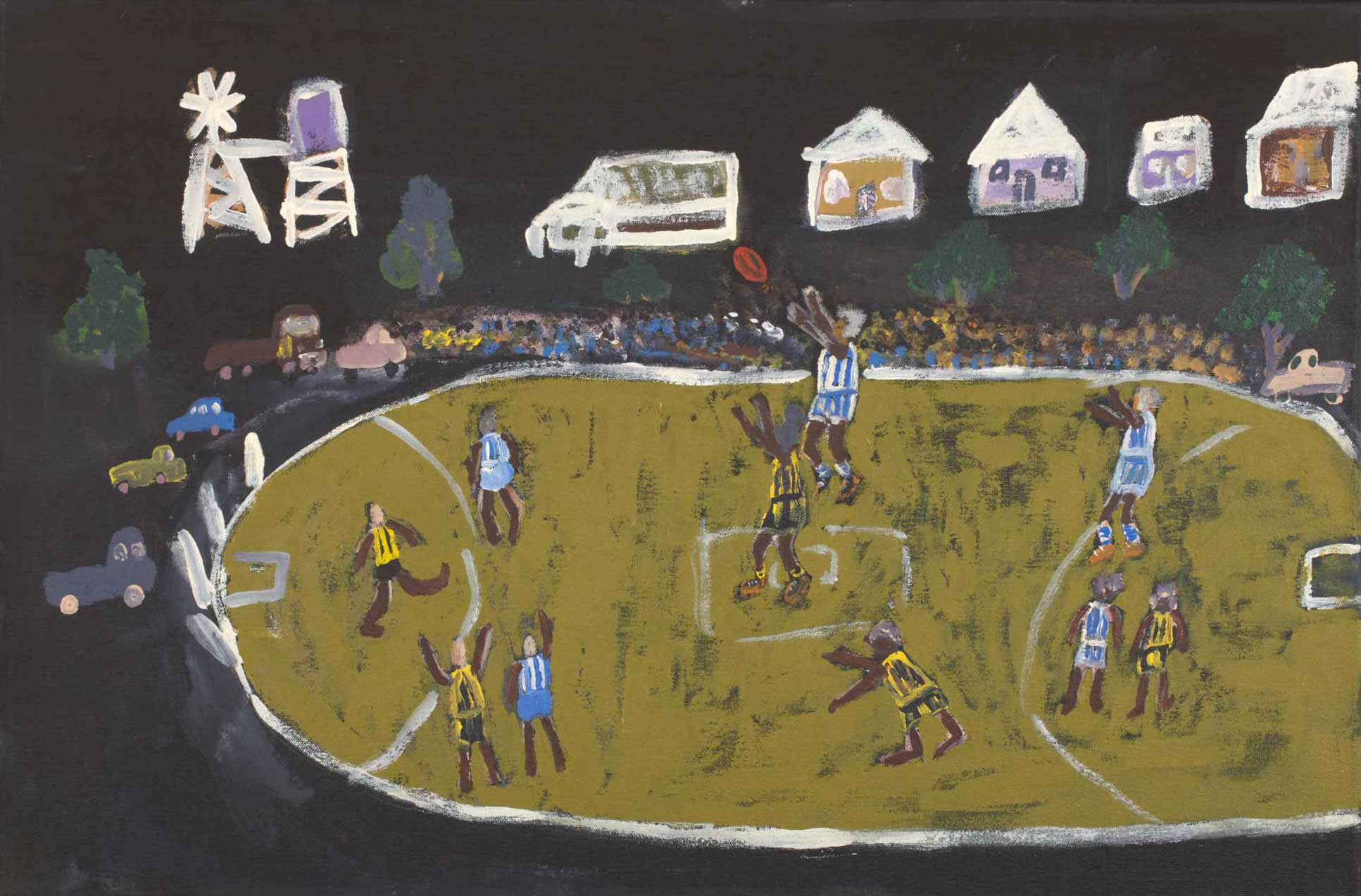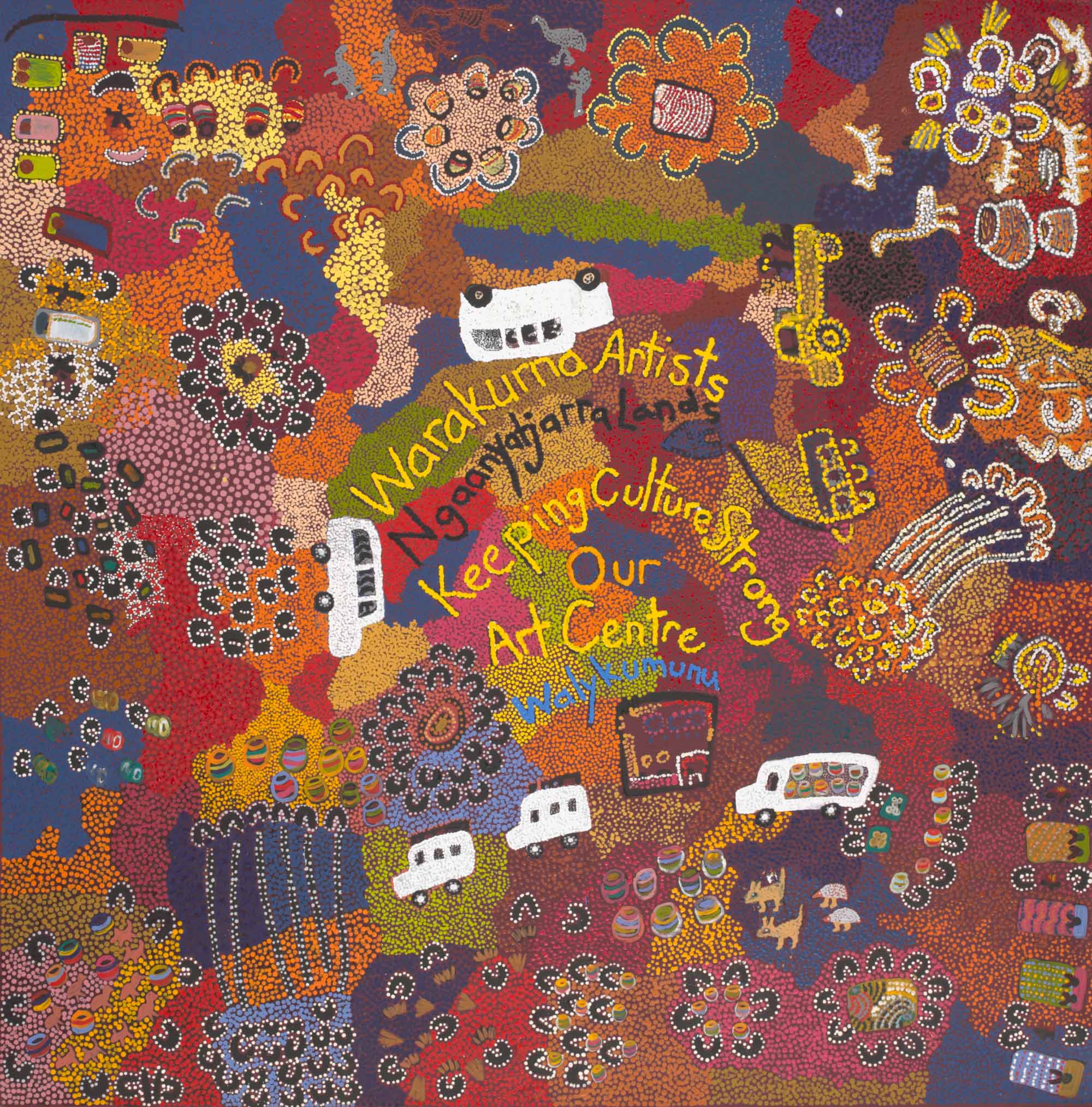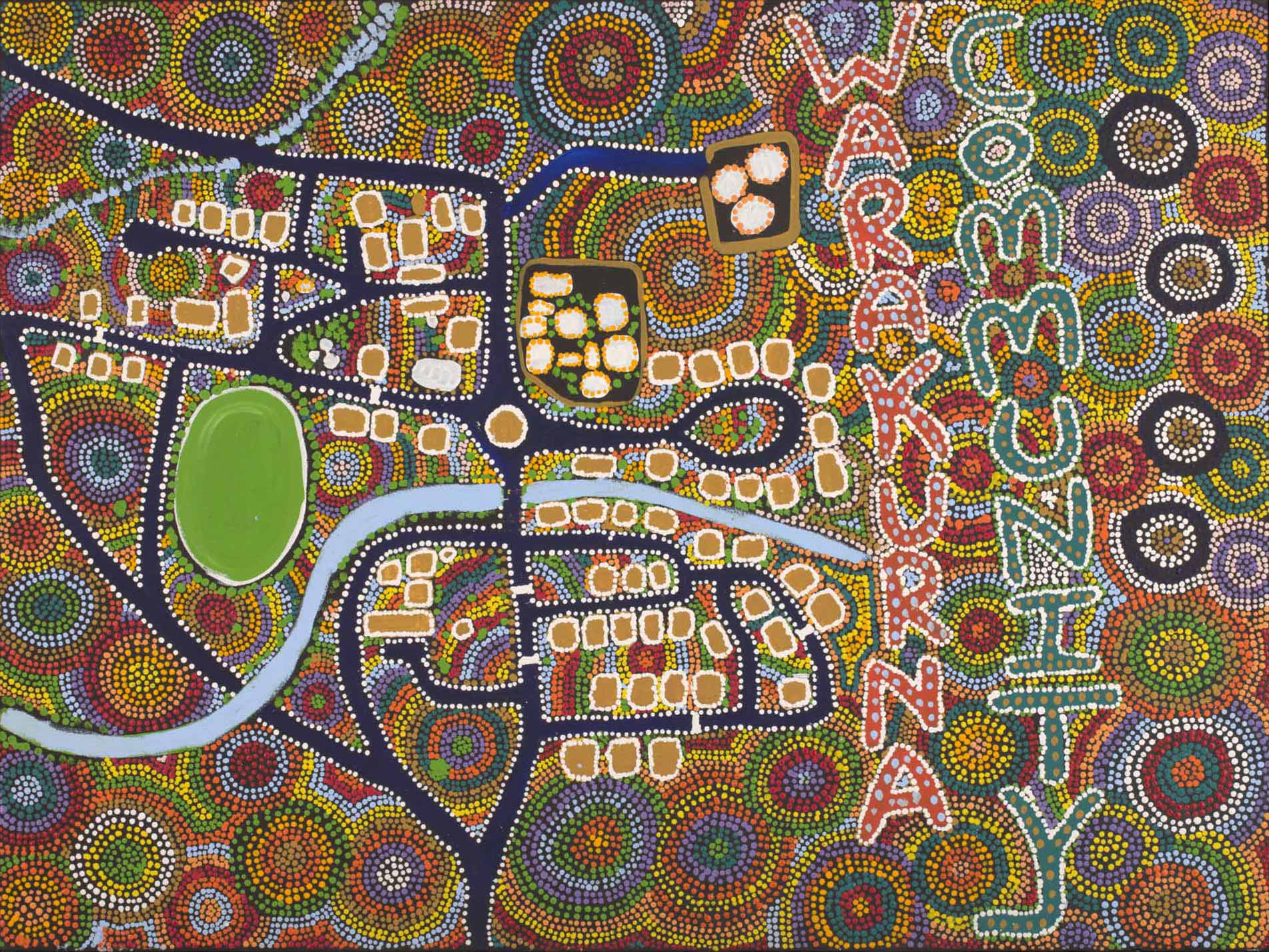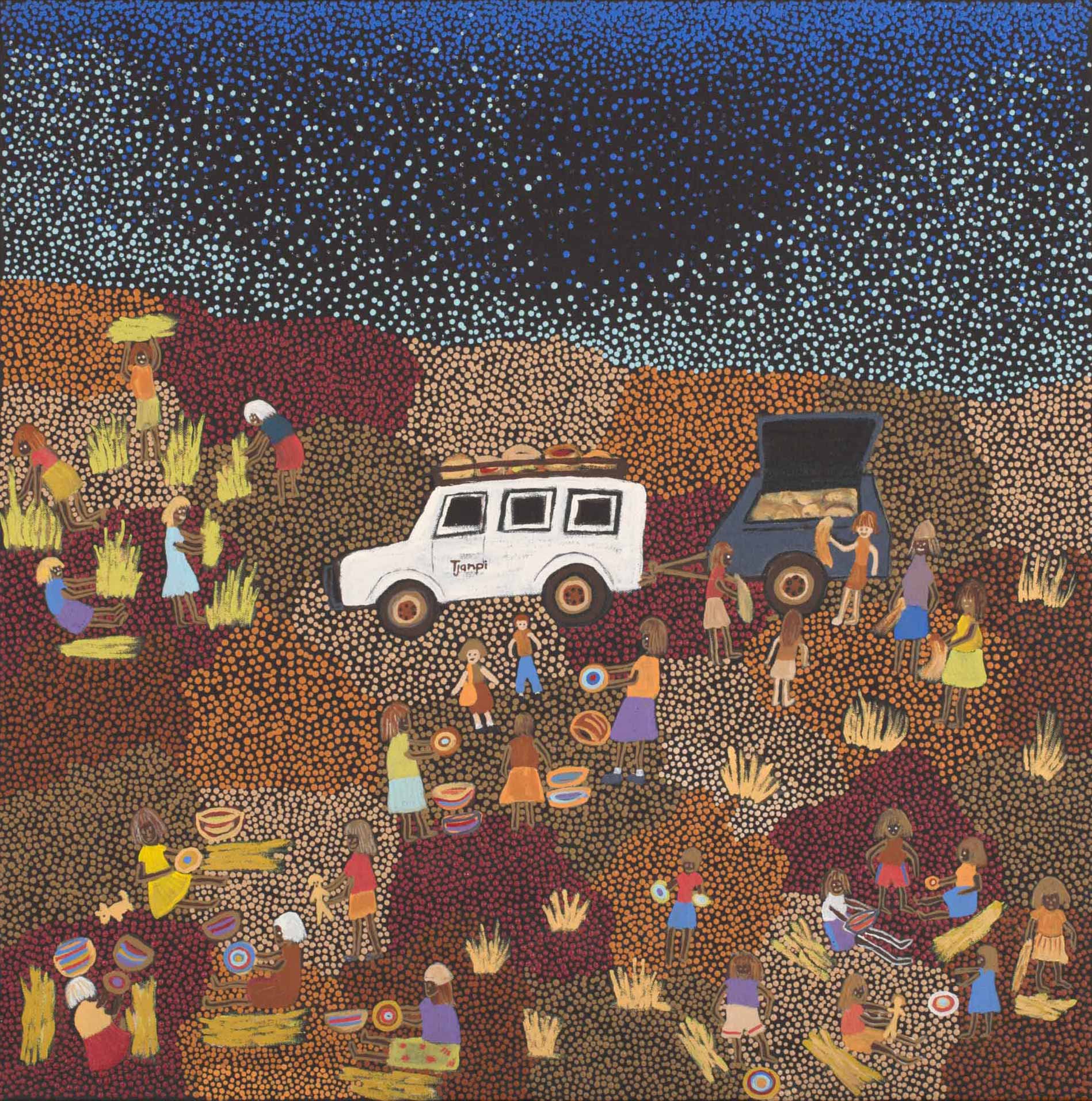
Tjanpi is the word for woven fibre sculptures or objects made from grass and other natural materials.
Those who work at the Warakurna Art Centre know how to make these sculptures using materials from the land.
Polly Butler-Jackson was born at Yulpigari and has been making grass and fibre baskets and sculptures for many years. In this painting she depicts groups of women working together to collect the grass, dry it and weave it into bowls or sculptures, while telling stories.
Younger girls learn the art of tjanpi from their mothers and grandmothers.
 Questions
Questions
Look closer at the painting. What does it teach you about how tjanpi is made and the materials used?
What community connection do you think these activities would provide?
How is culture and knowledge passed down here?
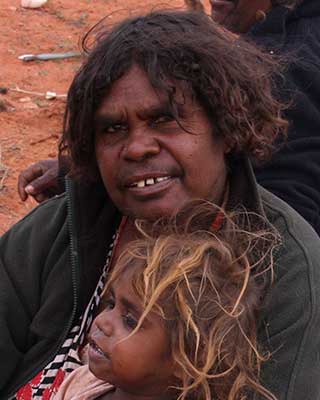
Polly Pawuya Butler-Jackson
Born 1957, Panaka skin group
Polly Pawuya Butler-Jackson was born at a soak called Yulpigari, close to Partupirri (Bunglebiddy) rock-hole.
As a child she travelled on foot with her family in country to the northwest of Warakurna. She went to school at Warburton Mission and then to Pink Lake High School in Esperance, on the south coast of Western Australia.








